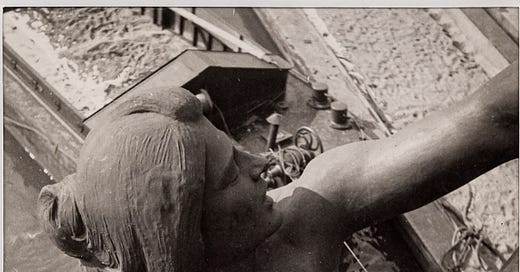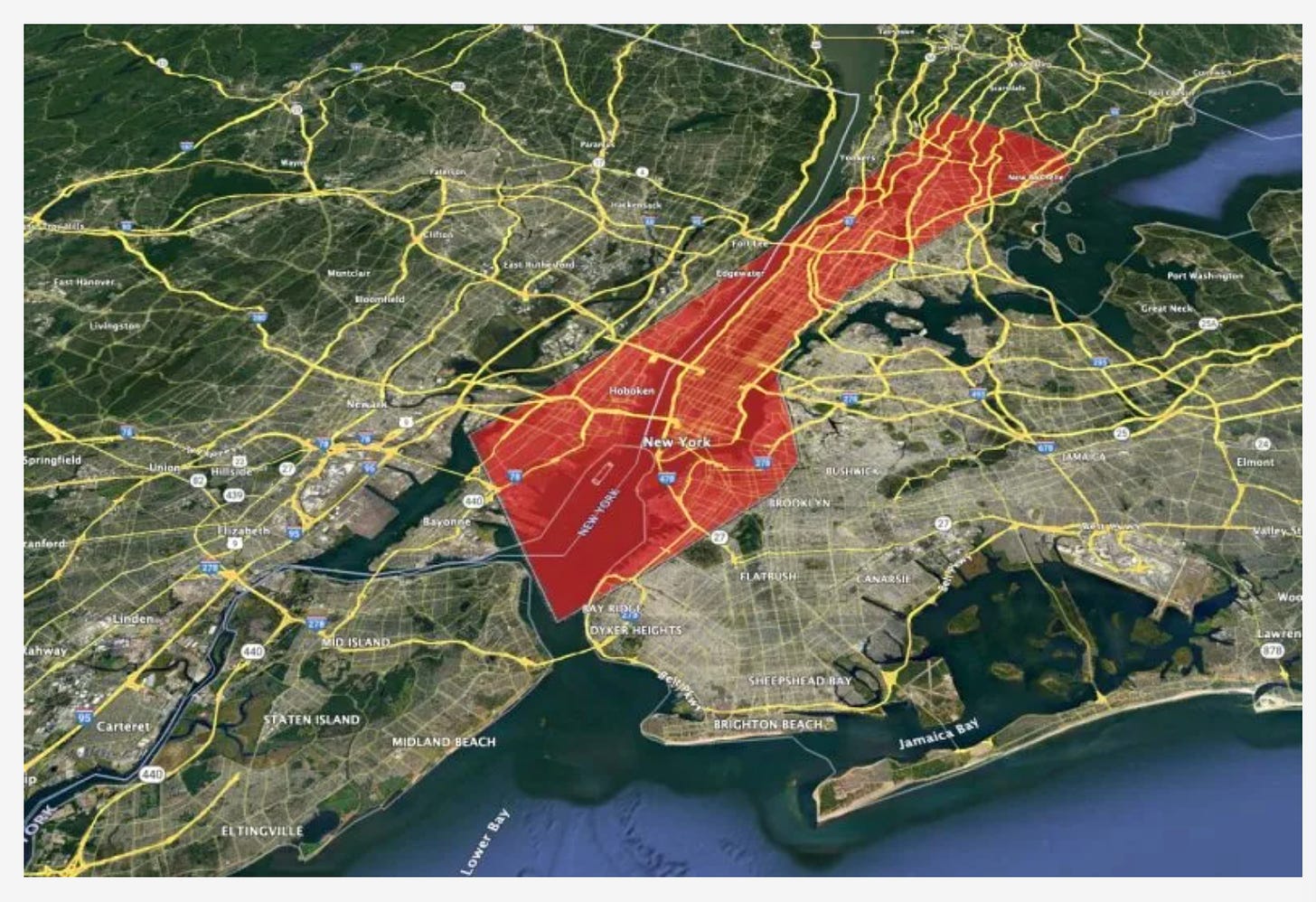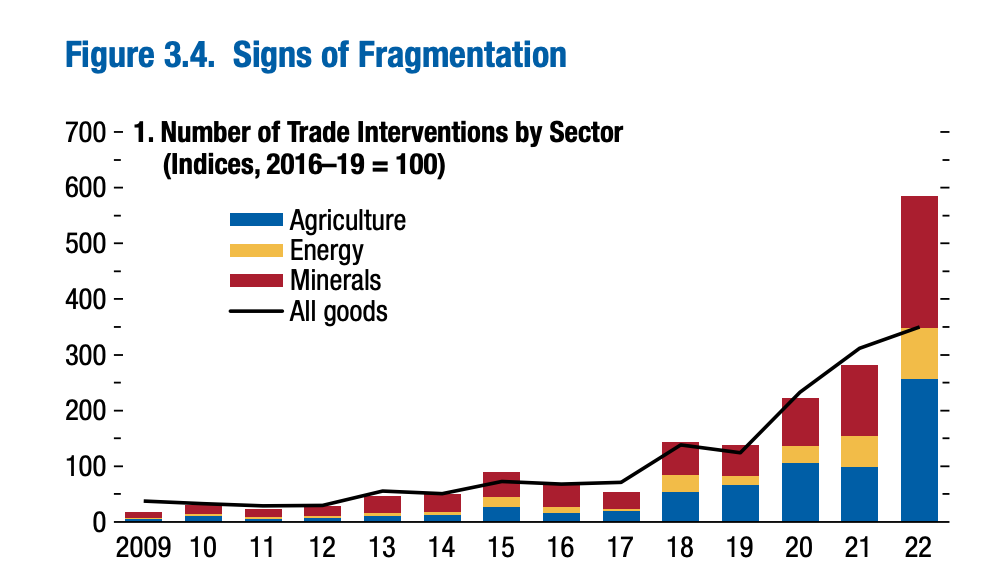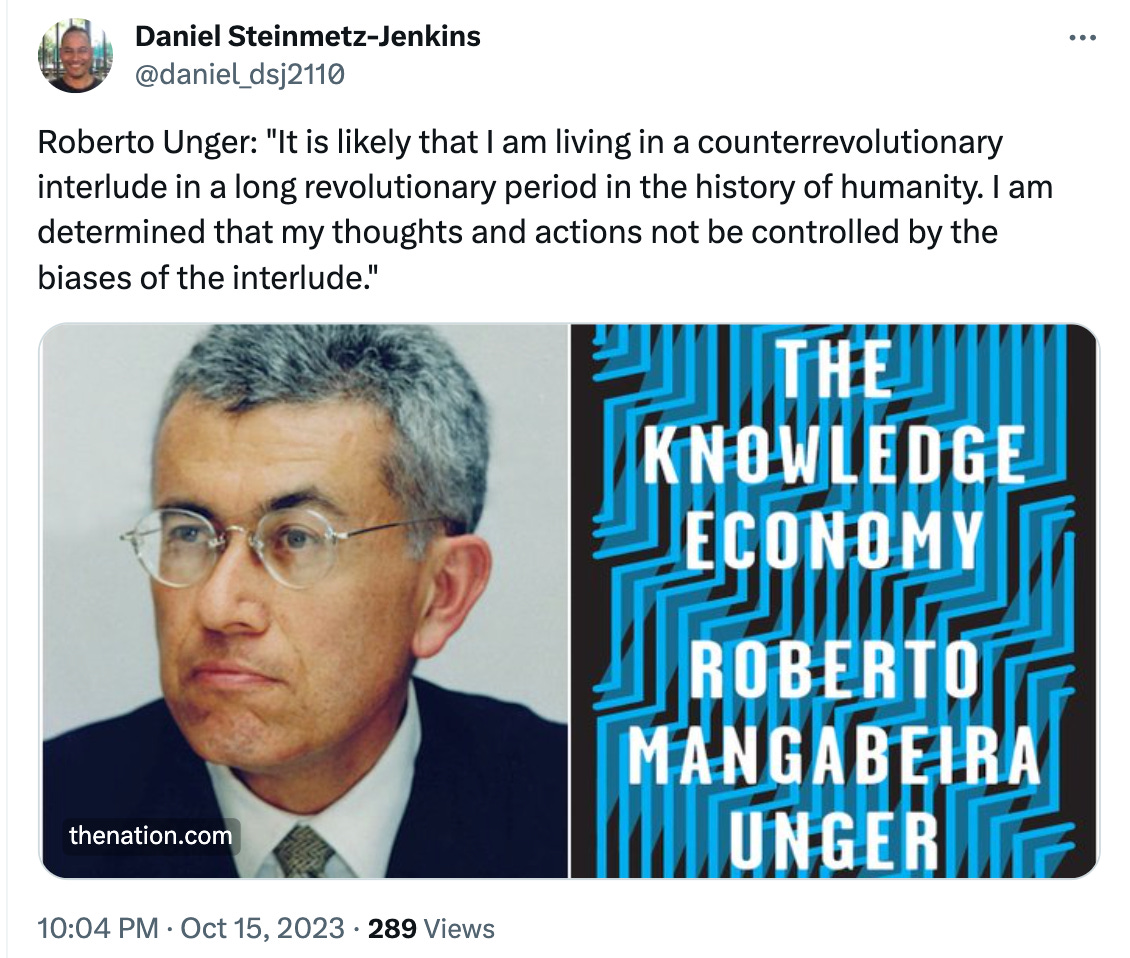Chip wars, deglobalization, a maverick economist & Russia reorienting
Great links, images and reading from Chartbook Newsletter
Thank you for supporting Chartbook newsletter. To get the full Top Links feed, please click here:
Dora Maar, Statue de Femme, 1935. Maar (née Henriette Théodora Markovitch) was born to a French mother and Croatian father in Paris in 1907, and spent most of her childhood in Buenos Aires. After studying art in Paris she joined a Surrealist circle including Breton, Eluard and Bataille and her distinctive contributions were to the formation of a Surrealist photography. Her work, which had initially included street scenes, turned more to montages and ambiguous close-ups over the 1930s. In 1936 she began the affair with Picasso that was to define her reception and image. She was his muse, and helped him to assemble Guernica as documented in a series of photographs, but the relationship and its end in 1944 also contributed to a nervous breakdown that saw her receiving electric shock therapy and then being treated by the radical psychoanalyst Jacques Lacan. Her reputation as an artist in her own right has taken off since her death in 1997.
Fifty years on from 1973
If you step back we're at the end of a long arc from 1973, when Arab states could wage a war that seemed an existential threat to Israel, to 2023, when Arab states are too dysfunctional or feckless to be much more than reactive onlookers amid a war that threatens the whole region
Gregg Carlstrom making a point that Cameron Abadi and I converge on in our recent podcast on the Gaza war. To listen in, click here.
For scale
The area placed under siege by Israel is roughly the size of Manhattan, which I know is walkable in its entirety. That puts a lot of things in context, like Israel’s order to people in the north of Gaza to move south to avoid incoming bombardment. That is hard to imagine given the whole area is so densely populated (and bombed; hospitals in Gaza now report a patient a minute coming through while they run out of supplies).
Source: Newsweek
Dear Reader,
Glad you are enjoying this Top Links. Chartbook Newsletter is fun to write. And I’m delighted it goes out for free to readers around the world. But it takes a lot of work! What sustains that effort are voluntary subscriptions from paying supporters. As a thank you, several times per week, paying supporters of Chartbook Newsletter receive an email like this, jam-packed with fascinating images, links and reading, as well as longer analytical essays like Saturday’s deep dive on Gaza. If you would like to receive the full Top Links in future, click here to join the supporters’ club:
Grim meeting in Marrakesh
Subscribers only
Tightening chip sanctions
Regular readers will have noticed Chartbook’s focus on semiconductors and microchips as an emerging field of geopolitical anxiety and contest, with America playing aggressive defense. Chip-integrated AI systems are crucial to new surveillance technologies, supercomputers and hypersonic missiles. America thus seeks to cut China off both from accessing foreign technology and developing its own:
The US plans to tighten sweeping measures to restrict China’s access to advanced semiconductors and chipmaking gear, seeking to prevent its geopolitical rival from obtaining cutting-edge technologies that could give it a military edge.
The latest rules aim to refine and close loopholes from curbs announced last October, according to people familiar with the matter. The Biden administration is seeking to strengthen controls on selling graphics chips for artificial intelligence applications and advanced chipmaking equipment to Chinese firms …. The US will also impose additional checks on Chinese firms attempting to evade export restrictions by routing shipments through other nations, and add Chinese chip design firms to a trade restriction list, requiring overseas manufacturers to gain a US license to fill orders from those companies.
Source: Bloomberg
No longer the safest asset?
Subscribers only
Europe’s federal creditor
Subscribers only
The IMF is worrying about global fragmentation…
In their latest World Economic Outlook, the IMF highlights some signs of much-discussed “deglobalization” and its geopolitical causes. This figure shows largely protectionist interventions by states in commodity markets like minerals:
They explain:
In 2022, Russia’s war in Ukraine caused a major spike in new trade restrictions for commodities: there were more than six times more new restrictions affecting trade in commodities in 2022 than the 2016–19 average. In contrast, trade-restricting measures on overall trade increased 3.5 times.
Source: IMF WEO, chapter 3, pp. 76-7
…but others are not so worried
Alan Beattie on why commodity markets are unlikely to segment on geopolitical lines, writing in the FT:
You hear a lot more from politicians about geoeconomic fragmentation than you see it in commodity markets and value chains. Of course, these are early days: governments can go a lot further to break up markets, and companies take time to adjust to new realities. But there’s thin evidence so far that we’re back in an era where great powers are carving up the world’s food and mineral riches between them.
In practice, commodity exporters are generally following an entirely sensible geoeconomic strategy of ruthless pragmatism. Governments that commit to one customer on political grounds leave themselves open to dependency and exploitation. Playing one off against another produces dividends. Chile, the world’s second-biggest producer of lithium for electric batteries, was assigned to the US-Europe club in the IMF simulation. In reality, it sells much of its minerals to China. But the Chilean government has dangled the prospect of more exports to Europe to gain concessions in an EU-Chile trade deal, with the result that Brussels softened its usual hard line against favouring local producers to let Chile sell lithium cheaply to its own domestic processing industry. Indonesia, courted by both China and the US for its nickel, has used its strong negotiating position to compel trading partners to invest in processing plants. In any case, the power imbalances behind geopolitical fragmentation are nothing like those of the first cold war. The US does not have the overwhelming financial or military power to help topple inconvenient governments in commodity-producing countries, as it notoriously did to Guatemala’s president Jacobo Árbenz in 1954 over his plans for land reforms in US-owned banana plantations.
A maverick economist
Abba Lerner had a remarkable life of the Jewish twentieth century - arriving in London’s East End from the Russian empire as a toddler, working as a machinist and Hebrew teacher before studying under Hayek at LSE and meeting Keynes in Cambridge, and never receiving academic tenure until he was in his 60s. He is intellectually a representative of that lost century too, the short twentieth century that ended not in 1989 but slightly earlier: here was a mainstream economist concerned with the meeting of social goals through deliberate human agency (such was “functional finance”), thus contributing his economic expertise to serious models of socialist planning. Lerner taught advanced macroeconomic theory at Queens College of CUNY, New York. Here his teaching was notably Keynesian. The course outlines, reading assignments, midterm and final exams for 1973 through 1975 have been transcribed and posted at Economics in the Rear-view Mirror, with thanks to Irwin Collier.
Dora Maar, Shampoo, or Woman’s Head with Soap, 1934
In the interregnum
The “time of monsters” was Antonio Gramsci’s famous term for such a time, when “the old is dying and the new cannot be born.” So Unger’s phrasing here might not be as optimistic as it first appears…
Russia’s reorientation
Subscribers only
Before the Kindle
Subscribers only
How to write the history of neoliberalism?
Crack-Up Capitalism, class struggle, empire, the state, democracy … this was quite an evening in NYC last week:
If you have scrolled this far, please consider subscribing for full Top Links and additional long analyses of geopolitics, economics and much else in the news:










